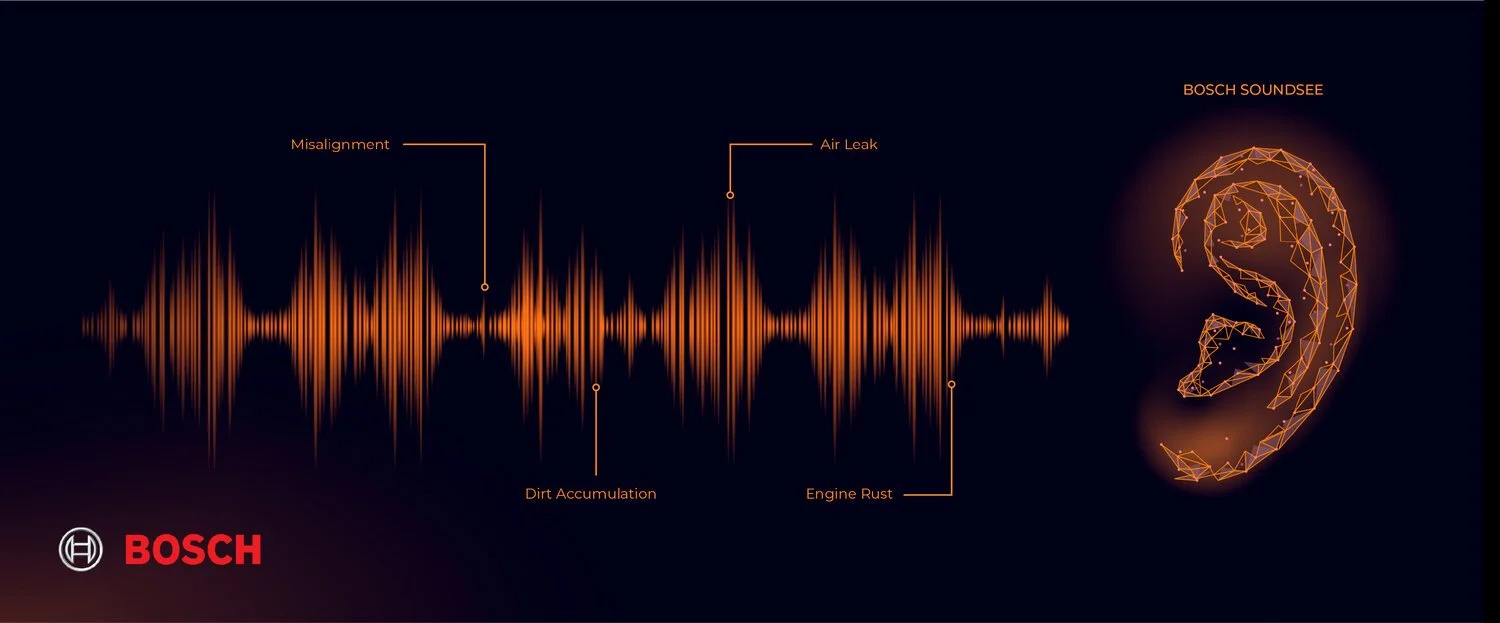Bosch Corporate Innovation Partnership
Develop a go-to-market strategy for Bosch’s acoustic AI technology, SoundSee
Overview
As part of a corporate innovation course, I worked with an interdisciplinary team to help Bosch explore market opportunities for SoundSee—an AI-powered acoustic sensing technology that detects subtle audio signals to enable early diagnostics.
Our goal was to identify a high-impact entry market for this emerging technology. Through research, interviews, and prototyping, we delivered a go-to-market strategy and product concept that showcased SoundSee’s potential. Our work was well received and aligned closely with real-world product innovation practices.
Role
Product Designer
Timeline
Feb. 2020 - May. 2020 (3 Month)
Challenges
Our challenge was to uncover a promising entry point for SoundSee—an early-stage AI sensing tool with untapped potential.
Bosch had developed a cutting-edge AI technology called SoundSee, which uses deep audio analytics to detect subtle acoustic signals and enable early diagnostics—even when issues can’t be heard by humans.
At the time, SoundSee was still in early development. Bosch needed help identifying a high-impact entry market where the technology could deliver clear value and unlock its commercial potential.
The Outcome
We surfaced a compelling use case and market entry point that aligned with Bosch’s innovation goals.
After extensive research and interviews, our team developed a strategic path to bring SoundSee to market:
Identified the industry where SoundSee’s capabilities could solve meaningful problems
Defined an entry strategy aligned with user needs, business potential, and technical feasibility
Designed a concept product (MAP) to demonstrate how SoundSee could deliver real value in this space
Our final recommendation focused on a sector with clear demand, user accessibility, and strong alignment with Bosch’s innovation roadmap.
My Contribution
Facilitated Early Alignment
At the start of the project, I led whiteboarding sessions to help teammates visualize and align on ideas. This collaborative approach helped us surface different perspectives quickly and significantly sped up our discussions.
Drove Research Depth
When we reached the need-finding stage, I pushed for more interviews beyond Bosch’s internal experts. After securing buy-in from the team, we conducted six additional user interviews that gave us clearer insight into real user needs and helped validate the potential impact of SoundSee.
Led Design & Iteration
I co-led the design and testing process for our concept product (MAP) with two other product designers. We went through multiple design–test–learn cycles to refine the experience and ensure the final concept was intuitive, valuable, and grounded in user feedback.
Our Process
Our team followed a lean, iterative process to uncover the right market opportunity for SoundSee and build a compelling case for its adoption. The steps below highlight how we moved from ambiguity to a validated product concept and go-to-market strategy.





